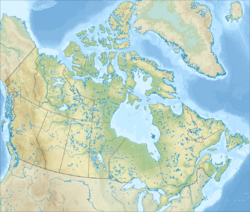Rosetown
| Rosetown | |
|---|---|
| Town | |

Rosetown's Main Street
|
|
| Motto: Discover Life Here | |
| Coordinates: 51°33′N 107°59′W / 51.550°N 107.983°WCoordinates: 51°33′N 107°59′W / 51.550°N 107.983°W | |
| Country | Canada |
| Province | Saskatchewan |
| Rural Municipalities (R.M.) | St. Andrew's |
| Post office Founded | 1907-09-01 |
| Village established | 1909 |
| Town incorporated | 1910 |
| Government | |
| • Mayor | Adam Krieser |
| • MP | Kelly Block, Conservative Party of Canada |
| • MLA | Jim Reiter, Saskatchewan Party |
| Area | |
| • Total | 12.14 km2 (4.69 sq mi) |
| Population (2016) | |
| • Total | 2,451 |
| • Density | 200/km2 (520/sq mi) |
| Website | www |
Rosetown is a town in the Canadian province of Saskatchewan, at the junction of provincial Highway 7 and Highway 4, approximately 115 km southwest of Saskatoon.
The town's motto, "The Heart of the Wheat Belt" reflects its history of being a farming community. It is the largest town located in the Rural Municipality St. Andrew's 287, Saskatchewan.
Rosetown belongs currently to the federal electoral district of Saskatoon—Rosetown—Biggar which was formerly known as Saskatoon—Rosetown. Rosetown belongs to census division 12 for purposes of enumerating the population which was 2,277 residents in 2006.
Rosetown won the 2004 Provincial Communities in Bloom.
On September 14, 1905, James and Anne Rose migrated from Lancashire, England to an area of Saskatchewan, Canada. They were the first settlers in the area now known as Rosetown. Later, in 1907, a group of people from the area, wanting a post office, made an application for one. As a name had to be given to the post office, the group decided to dedicate it to the towns most senior settlers, the Roses. As the name "Rose" was already taken, the group added "town" to it to create "Rosetown". The Post Office opened on September 7, 1907.
A Jewish colony was established near Rosetown after 1906.
Rosetown became a village on August 29, 1909 after Wilrod Bifair sold his homestead for $12.00 an acre to the Canadian National Railway. Village status was granted on August 4, 1909 when the population reached 500 people. W.G. King, W.R. Ferguson, and N.B. Douglas formed the Village Council in the same year. The first Village Council meeting was held on September 27, 1909. W.G. King established the first business in the village in 1909. Later that year he built three other stores at different locations.
...
Wikipedia


